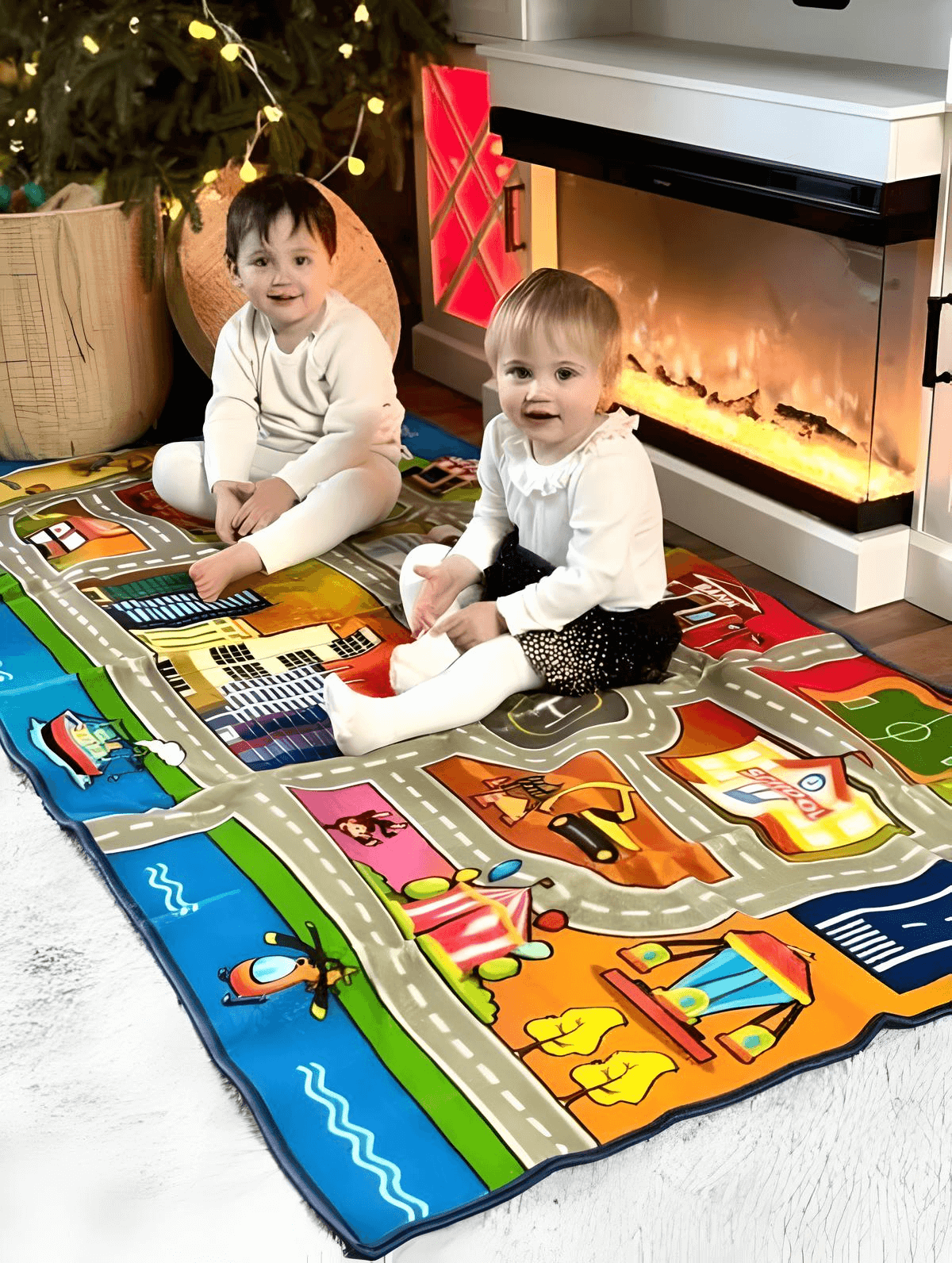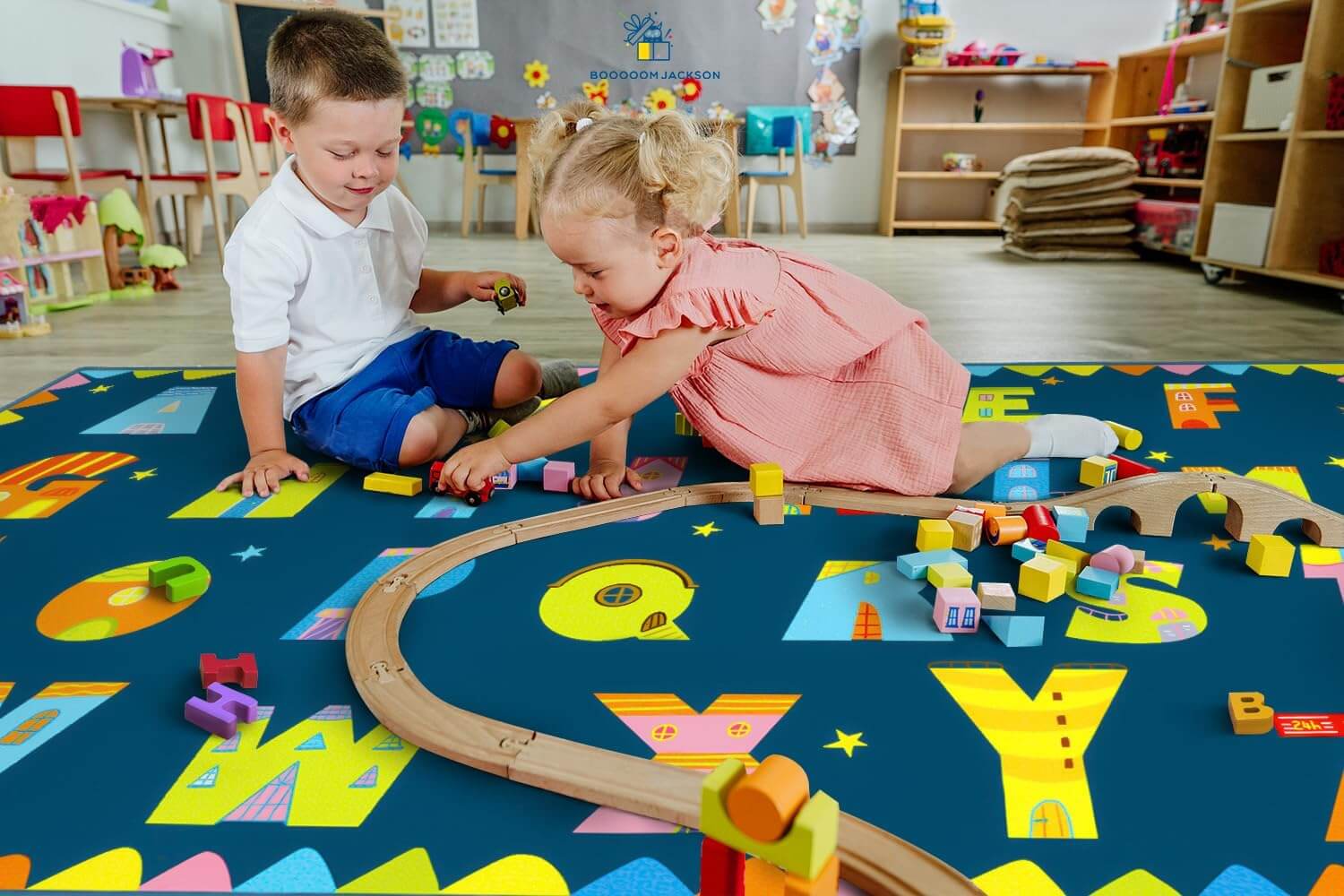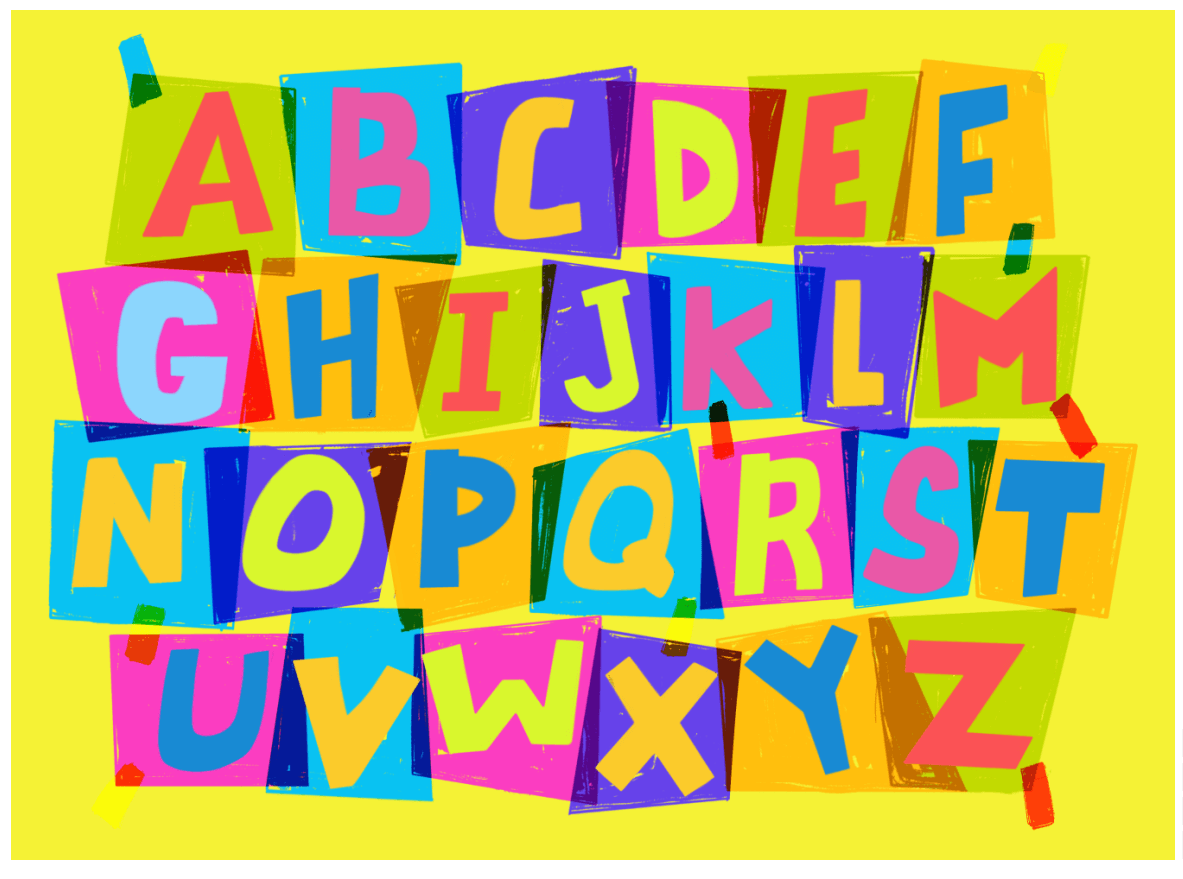Picture this: Little Jayden, who typically bounces off the walls after recess, is quietly tracing a flowing river pattern on the classroom rug with his finger. Meanwhile, Emma, who struggles with transitions, is calmly sitting on a leaf-shaped section taking deep breaths. Over in the corner, your most anxious student has found peace counting the stones in the "rock garden" portion of your carpet.
This isn't some magical classroom fantasy—it's the very real power of nature-inspired classroom rugs at work!
At BooooomJackson, we've been watching a quiet revolution unfold in classrooms across the country as teachers discover the remarkable calming effects of bringing natural elements indoors through thoughtfully designed floor coverings. Let's dig into why these nature-themed carpets are becoming essential tools for student well-being!
The Science Behind Nature's Calming Magic
Before we dive into specific carpet designs, let's chat about why nature patterns affect children's brains in such powerful ways. Turns out, there's some pretty fascinating science behind it!
According to research on biophilic design in education, humans have an innate connection to natural environments that runs deep in our evolutionary history. Our brains are literally wired to respond positively to natural elements—even when those elements are simply visual representations!
Studies from the emerging field of environmental psychology show that exposure to nature imagery can:
- Reduce stress hormones like cortisol
- Lower heart rate and blood pressure
- Improve attention span and focus
- Decrease anxiety and irritability
- Enhance overall mood
"I was skeptical that a carpet pattern could really make a difference in my classroom management," admits Ms. Rodriguez from Sunshine Elementary. "But within a week of installing our BooooomJackson Forest Floor Rug, I noticed my students were settling more quickly after transitions and staying engaged longer during circle time. The change was dramatic!"
From Chaos to Calm: Natural Patterns That Soothe Young Minds
Not all nature-inspired designs deliver the same benefits. Research from the Children & Nature Network suggests that specific natural patterns are particularly effective at triggering our innate "biophilia" response.
Flowing Water Patterns: The Ultimate Stress-Reducer
Carpet designs featuring gentle streams, flowing rivers, or soft wave patterns tap into water's universal calming properties.
"Our BooooomJackson Riverbed Rug has become our classroom's cool-down spot," shares kindergarten teacher Mr. Washington. "When students feel overwhelmed, they can sit by the 'river' and practice our calming sequence. Something about tracing those flowing lines with their fingers helps reset their emotional state faster than any other technique we've tried."
The science behind water's calming effects suggests that simply viewing water patterns activates parasympathetic nervous system responses—essentially flipping the switch from "fight or flight" to "rest and digest" mode.
Woodland Elements: Security in the Forest
Forest-themed carpets featuring trees, leaves, and woodland creatures create feelings of shelter and safety—essential ingredients for learning readiness.
"My special education classroom has our BooooomJackson Woodland Wonder Carpet divided into 'forest zones,'" explains Ms. Taylor. "Students who need emotional regulation can retreat to the 'peaceful grove' area with its canopy of leaves. For my students with sensory processing challenges, having this defined sensory-calm space has been a game-changer."
According to research published in the International Journal of Environmental Research, forest imagery specifically helps reduce cognitive fatigue—a common challenge in busy, overstimulating classroom environments.
Rock and Stone Patterns: Grounding Energy Effectively
Perhaps the most surprisingly effective natural elements are stone and rock patterns, which provide visual weight and stability.
"We have what my second graders call 'The Rock Garden' section on our BooooomJackson Nature Path Rug," shares veteran teacher Ms. Chen. "I've noticed that my most physically active students are drawn to this area during independent reading time. Something about those stone patterns seems to literally 'ground' their energy in a way that allows them to focus."
The concept of "visual weight" in environmental design psychology suggests that representations of heavy, stable elements like stones create feelings of security and permanence—precisely what many children with anxiety or attention challenges need.
Beyond Calm: Additional Benefits of Nature-Inspired Classroom Rugs
While the mental health benefits of nature-themed carpets are impressive enough, these designs offer numerous other advantages for the learning environment:
Reinforcing Environmental Education
Nature-themed carpets become living teaching tools for environmental studies:
"Our BooooomJackson Ecosystem Rug features different habitats, which we reference constantly during our science units," explains third-grade teacher Mr. Patel. "The students physically sit in different 'biomes' during group work, which helps solidify their understanding of environmental concepts."
Environmental education researchers confirm that creating tangible connections to natural systems significantly enhances science comprehension and retention.
Building Nature Vocabulary Naturally
The detailed elements in well-designed nature rugs introduce rich vocabulary:
"I've noticed my students spontaneously using words like 'canopy,' 'tributary,' and 'undergrowth' since we got our forest-themed carpet," shares first-grade teacher Ms. Jackson. "These terms have become part of our classroom language simply because the visual reminders are literally right beneath our feet all day!"
Educators from the National Science Teaching Association emphasize that environmental vocabulary acquisition happens most naturally when children have consistent visual referents.
Creating Geographic Awareness
Landscape-based carpet designs develop spatial thinking skills:
"Our BooooomJackson Mountain Range Rug has contour lines woven into the design," explains fourth-grade teacher Mr. Thompson. "My students intuitively understand topographic concepts now because they physically experience varying 'elevations' in our classroom daily."
According to geographic literacy researchers, early exposure to landscape representations significantly enhances spatial reasoning abilities.
Designing Your Nature-Inspired Calming Space
Ready to transform your classroom into a nature-based haven? Here are practical suggestions for implementing biophilic carpet designs effectively:
1. Match Natural Elements to Your Needs
Different natural patterns support different goals:
- Water patterns for general calm and transitions
- Forest elements for security and focus
- Mountain designs for perspective and goal-setting
- Meadow imagery for creativity and exploration
2. Create Intentional "Nature Zones"
Strategic placement maximizes benefits:
- Position flowing water patterns near entryways to ease transitions
- Place forest elements near reading areas to enhance concentration
- Use rock/stone sections where stability and grounding are needed
- Incorporate seasonal elements to mark gathering spaces
3. Develop Nature-Based Regulation Routines
Build classroom management around natural elements:
- "River breathing" following water patterns
- "Tree pose" on forest sections for centering
- "Mountain strength" visualization on landscape features
- "Stone stacking" focus activities on rock patterns
As kindergarten teacher Ms. Rodriguez explains: "We've developed an entire emotional regulation vocabulary based on our BooooomJackson Nature Elements Rug. When I see a student struggling, I might suggest they need some 'river calm' or 'tree strength.' They immediately know which carpet section to visit and which breathing technique to use."
Real Classrooms, Real Results: Nature Carpet Success Stories
The proof is in the peaceful pudding! Teachers implementing nature-inspired classroom carpets report:
"After adding our stream-patterned carpet, our transition times shortened by nearly 40%," shares Ms. Washington from Oakwood Elementary. "Students who previously struggled with moving between activities now follow the 'flowing river' to their next station, and something about that visual pathway makes the shift significantly smoother."
"Our special education department invested in BooooomJackson Sensory Nature Rugs for all resource rooms last year," reports Principal Taylor. "Referrals for behavior issues have decreased by 32%, and teacher reports indicate that the calming influence of these nature-inspired spaces has been particularly beneficial for students with anxiety and attention challenges."
"I was amazed when parents started asking what was happening in our classroom," admits third-grade teacher Mr. Chen. "Several mentioned their children were teaching 'forest breathing' techniques at home and requesting nature elements in their bedrooms. The calming strategies they're learning on our woodland carpet are extending well beyond our classroom walls!"
Bringing It All Together: Creating Your Biophilic Classroom Foundation
As research from the Center for Green Schools confirms, children today spend over 90% of their time indoors—making the integration of natural elements into learning environments not just beneficial but essential for well-being.
A thoughtfully selected nature-inspired classroom carpet might seem like a simple design choice, but it represents something much more profound: a daily connection to the natural world that our students' developing brains intrinsically crave.
"When we rolled out our new BooooomJackson Nature Immersion Carpet, I didn't expect it to become the heart of our classroom community," reflects veteran teacher Ms. Patel. "But watching my students instinctively gather on the mossy knoll for stories, trace the flowing stream during thinking time, or sit among the carpet stones when they need stability has transformed our classroom culture. These nature elements speak to something deep in children that all our high-tech interventions cannot reach."
In a world where anxiety, attention challenges, and sensory processing issues affect more students every year, perhaps the most powerful intervention isn't a new app or behavior chart—it's reconnecting our children with the natural patterns their developing brains are designed to respond to. And sometimes, that connection begins right beneath their feet, on a classroom carpet that brings the outdoors in.




Leave a comment
This site is protected by hCaptcha and the hCaptcha Privacy Policy and Terms of Service apply.